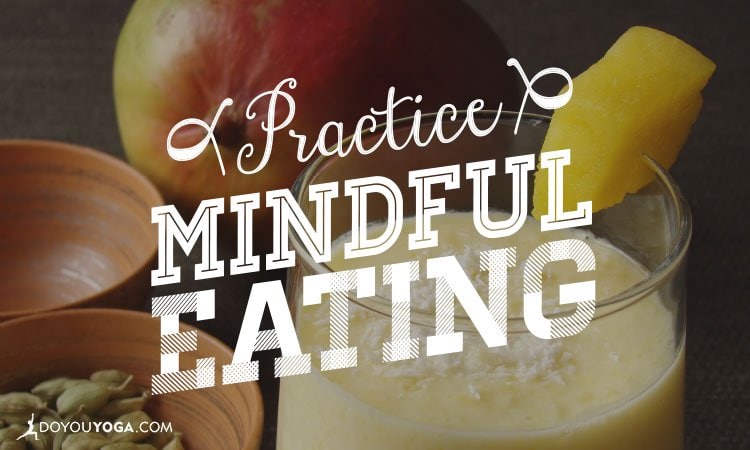Imagine sitting down to a quiet candlelight dinner. The atmosphere is relaxing, the food smells delicious, and you are sitting comfortably across from someone who makes you smile. On your plate is a meal of nutritious food, fixed just the way you like it.
Under these ideal circumstances, your mood is positive, allowing for adequate absorption of nutrients and conscious awareness of what you are taking in. You are less likely to overeat, rush through your meal, and end up with digestive discomforts.
How Realistic Is This For You?
I can honestly say I already forgot what I had for breakfast, downed an energy drink while driving from class to work, and grabbed a handful of something crunchy in the breakroom in the middle of the day when I was hungry. This is the definition of not-so-mindful-eating and, unfortunately, it’s how most of us practice our relationship with food.
In contrast, mindful eating is the practice of deliberately paying attention to what you are eating, while you are eating. Your focus is on nothing but your food and how your body feels while eating it. Eating mindfully, you’ll notice how many of those french fries you eat, when you feel full, and possibly the large amounts of grease and salt, making them less appealing.
Benefits Of Mindful Eating
After learning to eat mindfully, you won’t feel guilt while savoring a cookie. Instead, you’ll feel satisfaction. If you eat mindfully, you’ll remember every delicious bite of breakfast.
Mindful eating has many surprising benefits. Although it has nothing to do with what to eat, it helps many people lose and maintain weight by getting them in touch with feelings of fullness and hunger. Mindful eating is also being used to treat chronic eating disorders, including emotional eating, binge eating, anorexia and bulimia.
Perhaps most importantly, eating mindfully fosters a healthy relationship with food and lets you savor and enjoy what’s on your plate.
Practice On Something Small
If you wait until mealtime when you’re hungry and exhausted, it will be difficult to practice mindful eating. Start small. Practice on something like a strawberry or an almond. Make yourself comfortable in a quiet place and examine your food. Observe every detail about its appearance – the color, texture, and shape.
Take a bite by bringing the food up to your mouth and savor the taste and how the food feels. When your mind wanders, bring it back to what you are doing—eating.
Smile! If you bring thoughts of joy and love to your food, it will bring joy and love to your body in return. You have just taken a very important step in your ongoing practice of mindful eating!
The 4 Areas Of Mindfulness
Consider the four areas of mindfulness as you eat: Mind, Body, Thoughts, and Feelings. Is your mind in the present moment, or wandering to your to-do list? Then, examine how your body feels. Are you tired, or energized? Does your stomach feel empty, or relatively full?
Next, examine your thoughts. Does the food bring specific thoughts to mind, like memories or beliefs about the food? Finally, consider your feelings about what you’re eating. Labeling foods as “good” or “bad” often brings up strong feelings, like guilt or regret. Avoid eating a meal with someone who causes you emotional upset, or resolve these conflicts before sitting down to a meal with them.
Slow Down
If you eat fast, there’s no way you’re doing it mindfully. There are many tricks you can use to slow down. Try eating with chopsticks to force you to take smaller bites, or count how many times you chew a bite, chewing 15-25 times before swallowing. You can also try putting down your fork in between each savory bite.
Be Conscious Of Your Environment.
It’s impossible to eat mindfully if you’re eating while driving, on the phone, or watching television. Sometimes distractions are unavoidable, but when you can, set up an eating environment conducive to mindfulness. Put away your cellphone and shut down the computer. At the very least, turn off the TV. Practice the chair-table-plate rule—eating only while sitting in a chair, at a table, and with your food on a plate.
For more information on what to eat, check out my previous article here.
Om Shanti.


